Alan M. Siegel's Blog, page 9
February 28, 2024
Simply Smarter: A brand experience newsletter
From the latest mergers and acquisitions re-shaping the business landscape to the buzz surrounding Super Bowl LVIII, we’ve got you covered. But that’s not all – our partnerships with OneTen and Entriva spotlight the power of effective brand building, and we have a new podcast episode dedicated to simplifying the employee experience. Let’s jump right in!
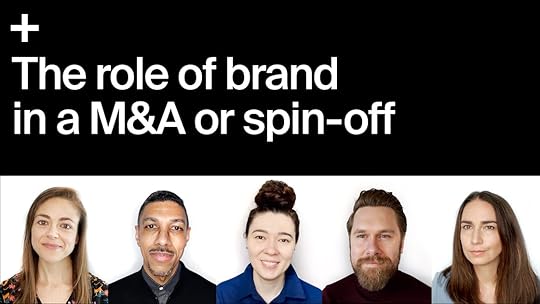 M&A makes a comeback
M&A makes a comebackMergers and acquisitions are back in full force — there’s Capital One’s bid for Discover and Walmart’s offer to TV-maker Vizio. So far, deals announced globally in 2024 total about $425 billion — a more than a 50% increase over last year. In this episode of Branding 101, our global branding experts examine why a merger or acquisition is the perfect time to reassess your brand story, visual identity, culture and brand-led experiences, propelling your new entity into the future.
 One million careers for Black talent
One million careers for Black talentDays after George Floyd’s death, a group of leading executives came together to discuss how corporations like theirs could take meaningful and sustained action for racial justice and equity in America. Together, they formed a coalition committed to upskilling, hiring and promoting one million Black individuals into family-sustaining careers over the next ten years. From naming to messaging, visual identity to digital expression, learn how we partnered with OneTen to further the promise of economic empowerment for Black talent in America.
[image error]Travel made simpleFor over 30 years, global B2B visa company, CIBT, has been offering visa, passport and immigration services to corporate travelers and travel management. But CIBT was exploring uncharted territory—consumer travel. The new digital travel brand, Entriva, comes at a time when global travel is up more than 200%, and simplifies the experience for travelers navigating an increasingly complex landscape of new and mandatory travel documentation. Learn how we helped to create a standout consumer product from a legacy B2B brand.
 Go big or go home
Go big or go homeWith 30-second spots at this year’s game costing about $7 million, the Super Bowl has become a potent platform for brands—from promoting new products to forging connections with audiences and, in some cases, creating distance from controversy. Whether it was celeb takeovers or Big Tech and AI showing up, our Experience experts, Amy Chen, Jenna Isken and Kyle Telman, weigh in on the ads from Super Bowl LVIII and which brands played to win.
 Simplifying the employee experience
Simplifying the employee experienceEmployees who work in simple workplaces—those where people easily get their work done and feel productive doing so—behave uniquely. They advocate on behalf of their company, innovate more and have higher retention rates. However, only one out of four employees find their workplace to be truly simple. From identifying your brand purpose to engaging your brand champions, Jared Taylor, Associate Director, Brand-led Change, shares five foundational actions to simplify the employee experience in our latest Siegel+Gale Says podcast episode.
The post Simply Smarter: A brand experience newsletter appeared first on Siegel+Gale.
February 22, 2024
Go big or go home: how brands showed up at Super Bowl LVIII
With 30-second spots at this year’s game costing about $7 million, the Super Bowl has become a potent platform for brands—from promoting new products to forging connections with audiences and, in some cases, creating distance from controversy. Whether it was celeb takeovers or Big Tech and AI showing up, our Experience experts, Amy Chen, Jenna Isken and Kyle Telman, weigh in on the ads from Super Bowl LVIII.
CBS News | The best and worst Super Bowl commercials of 2024: Watch this year’s outlier ads
Axios | Big Tech sells AI during the Super Bowl
Adweek | Brands talk a big game about diversity. Did Super Bowl 58’s ads follow through?
The post Go big or go home: how brands showed up at Super Bowl LVIII appeared first on Siegel+Gale.
February 14, 2024
Healthcare is complex, but patient interactions don’t have to be
This article originally appeared in The Drum.
Simplicity is key when it comes to user experience, not least in the healthcare sector. In the latest World’s Simplest Brands study, Siegel+Gale surveyed 15,000+ consumers on the perceived simplicity or complexity of 800+ brands across 25 industries. We looked at the consumer journey in healthcare by presenting participants with 14 ‘touchpoints’ in the journey and them them for their ratings on a scale of one, being the most complex, to 10, being the simplest.
So, which healthcare interactions were the simplest and which the most complex for consumers? Booking and preparing for an appointment, checking in, discussing health with a medical professional, and filling a prescription came out as the perceived simplest parts of the healthcare journey. Why? Likely because they’re familiar activities; things most of us have done so many times we don’t think about them anymore.
Technology with a human touch is the right medicineThe health insurance industry ranked 24th out of 25 industries on a scale of simple to complex. Unsurprisingly, moments related to payment – understanding what’s covered by insurance, understanding medical bills, and paying for medical costs – were rated as very complex touchpoints. Finding the right doctor for a patient’s needs and using health websites or mobile apps to help achieve health goals were thought of as almost as complex.
These issues all speak to information overload. We are bombarded with information and recommendations when it comes to our health. Finding the right doctor can be high stakes. But, where do we start? Ratings sites that have little info and even fewer credible reviews? Hospital websites? Insurance websites? Recommendations of friends?
Health websites abound and there doesn’t seem to be a singular source of truth. To make the consumer experience simpler, healthcare companies should work to blend technology with a human touch. Healthcare decisions are difficult decisions to take and in the end, people trust people. AI-driven personalization is important, but isn’t enough. A more human perspective remains key.
Simplicity with humanity is also a remedyHow to achieve this? Firstly, visit your own website. What’s your goal for it and who is it really for? If it’s for consumers, are you using language they can understand and talking to them as human beings? What action does the site require them to take and are you guiding them towards it? So many health systems, in particular, try to serve multiple audiences, and end up talking to patients in the same way they might talk to researchers or physicians.
A great example of an organization doing this the right way is Baylor Scott & White Health, in Texas. Their website is clearly meant for patients and is built for the to reasons patients might visit it: to find a doctor and schedule an appointment. Content tailored for medical professionals resides on a different site entirely.
Healthcare providers can also work to ensure person-to-person interactions feel human. As organizations attempt to move people from phone calls to patient platforms and apps, how they come across varies widely. Do you have a chat feature to create the feeling of a more tailored conversation? And how does that feature function – is it a list of topics or a dialogue?
Goodbye Dr. RobotThe Sydney app from Anthem Blue Cross Blue Shield is a great example of this done well. While the chat feature provides a list of options, the tone used is warm and empathetic. And once you begin an inquiry, you are quickly routed to a real person.
Lastly, make sure your team members are highly visible. Whether a hospital website or a health app, your experts don’t just lend credibility – they create relatability. Building relationships is of course key to building your brand or service.
One Medical is a great example of a company whose technology creates a more human experience: every time you use their chat, you’ll see the name of the person you’re speaking to along with their picture. Even a gesture as simple as making physician bios more prominent on hospital websites can humanize user experience.
This all matters. Because the most human aspects of healthcare are seen as the simplest – any complex interaction can greatly benefit from being more human. So much about healthcare is hard – brands that find meaningful ways to simplify the consumer experience and connect with them are those that will win in the long term.
Lisa Kane is Group Director, Strategy
The post Healthcare is complex, but patient interactions don’t have to be appeared first on Siegel+Gale.
February 8, 2024
Jared Taylor on the power of Brand-led Change
In SMPL Q+A, we interview our practitioners on all things relevant to branding, design and simplicity. Here, we speak with Jared Taylor, Associate Director, Brand-led Change. Jared discusses the trends he’s excited to see in 2024, misconceptions about Brand-led Change and the importance of in-person connections.
How would you describe your job to someone who doesn’t work in branding?
I like to describe my job as helping clients align who they say they are with who they are on the inside. More specifically, the Brand-led Change team helps connect a company’s brand with its organizational culture. We support companies in becoming more authentic, closing the gap between how a consumer and an employee experience a brand.
What’s a memorable change you’ve made at a place you’ve worked?
When I worked at Disney, I created the company’s first full-time dedicated employee engagement position. In that role, I helped roll out various employee-focused initiatives, such as integrating mindfulness and emotional intelligence into the culture, standing up internal communications processes, developing an innovative, co-created mentorship program and giving employees a voice through company-wide listening and input programs.
What’s a misconception about your job?
The biggest misconception is that our team only offers internal, traditional “brand” offerings such as internal trainings and brand compliance. Organizational culture, internal processes and the overall employee experience connect deeply to your brand, even if it’s not evident on the surface. While we view our work through the lens of brand, we take a holistic approach, looking across major touchpoints your employees have with your company and finding ways to wire brand into each of them. Our team is made up of experts with backgrounds in organizational psychology, change management and leadership development for a reason: because we believe culture and brand are two sides of the same coin.
What’s one of the most fulfilling parts of your job?
Connecting with Siegel+Gale’s client’s employees in one-on-one or focus group settings. I love hearing directly from employees: what motivates them, their frustrations and aspirations. It brings the work to life and makes it tangible. In 2023, I held my first in-person focus group post-COVID with a client, and the experience reminded me why I do what I do.
What trend are you most optimistic about?
Well-being– but I hope it’s not a trend. Well-being used to be programmatic, about fixing the worker. Forward-thinking companies realize that well-being needs a holistic approach; it must be about fixing the workplace instead.
I’m also optimistic about the emergence of “employee experience” as a practice inside organizations. The word has been tossed around a lot over the last few years, but there are now organizations, like Excellent, codifying and teaching employee experience design to HR practitioners.
What trend are you least optimistic about?
It’s not necessarily an HR trend but more of a business trend impacting HR: the recent reduction in DEI roles at many companies has been hard to watch. In a perfect world, DEI would be embedded into every corner of every business, and we wouldn’t need as many dedicated DEI roles to move the work forward. But most organizations are far from this place. We need focused, resourced, and, most importantly, empowered DEI roles to keep these efforts top of mind and embedded within businesses.
The post Jared Taylor on the power of Brand-led Change appeared first on Siegel+Gale.
February 7, 2024
Streaming services in the age of overchoice: finding clarity amidst industry complexity
This article originally appeared in Little Black Book
In the ever-evolving world of streaming, simplicity has been relegated to the back seat as the industry grapples with unprecedented growth and fierce competition. What once held the title as the second simplest industry in 2021 has taken an unexpected tumble, landing the sixth position in the tenth edition of World’s Simplest Brands.
The culprit? An onslaught of over 200 streaming services worldwide has left consumers befuddled by the paradox of choice. What should they subscribe to? Where can they find their coveted content? Respondents have compared the process of researching streaming providers to deciphering a complex medical bill. Selecting what to watch has become as intricate as finalizing the contract for a new car. As distribution agreements continue to fragment, viewers now feel that gaining access to their preferred content requires a degree in streaming studies.
The identity crisis of streaming platformsSo, where do we find a solution?
The challenge confronting most streaming platforms striving to stand out and differentiate themselves lies in their heavy reliance on Hollywood’s tried-and-true marketing playbook, where “content is king.” Considerable resources are allocated to promoting blockbuster shows, often overshadowing efforts to craft a distinct identity for the platforms housing this content. While compelling content can initially draw users in, when their beloved series concludes, viewers are left pondering, “But what exactly am I paying for?” Subscribers are now facing monthly fees ranging from $5 to $16 for a single streaming service, making this question a vital one given the significant financial implications.
One service grappling with this conundrum is Disney+. With its content divided among various sub-brands, like Marvel and Star Wars, Disney+ faces the formidable challenge of creating user value while building equity across all these brands. Rather than simply explaining why users should pay for Disney+, they must do so while simultaneously justifying the worthiness of each sub-brand. The drop in simplicity from the ninth simplest brand to the 77th in the United States underscores that while this approach may have originally succeeded by attracting viewers seeking specific brand content, achieving long-term customer loyalty demands a clearer and more unified platform identity.
On the other hand, services that have either established a brand from the outset or nurtured a distinctive identity have cultivated a deeper rapport with subscribers, helping them weather the industry’s twists and turns. Take Netflix, for instance. Since its inception, the streaming giant has gone beyond promising to “help you find your next favorite story” by delivering on that promise through substantial investments in technology (including their algorithm), user experience (with a focus on user-centric design) and original content. Users know what to expect, and Netflix consistently delivers, earning them the title of the simplest brand in streaming, 11th globally overall. Respondents have praised its straightforward interface, describing their experience as “easy,” “distinctive” and “reliable.” This perception extends beyond content and likely contributes to the surge in subscribers following changes to subscription plans and password-sharing crackdowns.
Untangling the web of complexitySo, what steps can streaming services take to unravel this complexity?
It begins with recognizing that Brand, Marketing and Product teams (and often others) must work together and speak different languages. Their shared goal is customer satisfaction, and to achieve that, the promises made by Marketing and Brand must align seamlessly with the overall user experience orchestrated by Product. Success necessitates these two teams working in harmony, with a mere brand book being insufficient.
For instance, a brand promise crafted by Marketing or Brand may not resonate the same way with the Product team. Consider Hulu, which promises to deliver something extraordinary. The challenge lies in translating this promise into practical platform functionality. Can it be a filter to provide users with an exceptional content discovery experience without overwhelming them with unnecessary features? Moreover, how can the features created by the Product team become meaningful proof points leveraged by Marketing to stand out in a crowded arena?
Our interactions with streaming product teams have uncovered significant creativity and passion. However, the intricacies of distribution agreements, legal contracts and brand guidelines often make it seem as though they are merely ticking off requirements. Engaging them in shaping how the brand manifests in the user experience can lead to the creation of unique and recognisable signature moments cherished by subscribers.
As the industry grapples with challenges (like the historic Hollywood writers’ strike), platform aggregators (such as Roku and Comcast) and the constant addition of new streaming platforms, the hurdles to finding exceptional entertainment appear to be a lasting feature. The volatility in this landscape promises substantial marketing shifts, and while the exact nature of these changes remains uncertain, those who can cut through the clutter and forge meaningful connections with their audience are poised to lead the charge.
Jenna Isken is Group Director, Experience
The post Streaming services in the age of overchoice: finding clarity amidst industry complexity appeared first on Siegel+Gale.
How airlines can take off with simplicity-first solutions
This article originally appeared in The Messenger.
You might be reading this on a flight.
In fact, a flight where you had to cram everything you needed into a backpack because you accidentally booked basic economy without realizing that it meant you were stripped of the right to a carry-on.
Had you known, you would have shelled out the extra $50 to not travel like a 20-something backpacker, boarding in the last group to the voice on the PA droning, “Now finally boarding: E for Extraneous, F for Forgotten,” …
How did this happen?
The culprit is: complexity. There is a vast array of airlines and their disparate ticketing, boarding, and baggage policies. And not only do policies differ across airlines, but they also differ across loyalty programs, tiers, flight origins and destinations, and even the platform you’re booking from. Passengers navigate through a maze of touchpoints before they ever set foot on a plane, only to then be asked to navigate security, hours-long wait times, delays, itinerary changes, missed connections, and lost luggage.
It’s no wonder that customer satisfaction with the industry is low. In a recent study surveying 15,000 consumers worldwide about which brands and industries provide the simplest (read: positive) experiences, the airline industry ranked low—largely due to confusion when an abrupt flight change or delay occurs, issues at arrival with lost luggage and other missed connections and simply understanding the benefits and policies of their specific ticket.
By taking a simplicity-first approach, airlines can resolve complexity and help alleviate some of the most stressful and painful moments throughout the passenger journey. Here are some examples:
Problem: Flight changes and delays. Solution: the connection conciergeWhat happens if your flight is delayed and arrives at the gate with not a minute left to spare to make your connection? Airlines could offer something like a Connection Concierge, a service that partners with airports to enable greater connection success.
Picture the following: flight attendants are made aware of passengers with a tight connection. These passengers are allowed to deplane before others to make it to Connection Carts that will transport passengers with tight connections or special needs to their gate, or even through customs, where there is a designated Connection Concierge line for those in danger of missing their connection.
If the connection is missed anyway, passengers can get a push notification to be automatically rebooked on the next flight to the same destination without having to wait in line. And if all else fails, airlines can engage with partners to develop a partner program to provide passengers who require overnight accommodations automatic bookings at partner hotels. And with how sophisticated customer relationship management technology is nowadays, much of the backend processes can be automated.
Problem: Misplaced luggage. Solution: the ”We’ve Got Your Back” capsule collectionSometimes, addressing a problem isn’t just about fixing it but about how we fix it. In the case of lost luggage, airlines already do everything in their power to help get the lost baggage to their rightful owners, including ground shipment to their hotel or home. To make the experience less painful, airlines even provide a stipend for replacement clothing and toiletry kits—but what if airlines offered something that could turn an unfortunate and frustrating experience into an exclusive experience that can’t be bought?
An airline could partner with a mid- to high-end fashion and personal care brands to develop a capsule collection exclusively for passengers who have lost their bags. The collection could include items such as pajamas, hoodies, and socks, and would feature the airline’s branding. This collection could become a covetable asset that sets the airline apart from the crowd as a signature experience indicative of the brand’s elevated approach to caring for its passengers.
Problem: Booking ease and comprehension. Solution: Your AI travel agentBooking a flight is a multi-step process that involves several steps: a preliminary search on Google Flights for ballpark costs, price comparisons on the airline’s site, and credit card travel portals for those who are points-maximizers. Many proceed with ricocheting between these sites repeatedly until the flight is booked.
But consider the following: the customer only ever gets a subset of the information they’re looking for throughout these touchpoints. Aggregators provide the basics, but so much are nuances on a per-airline basis that developing an interface for humans to navigate becomes ever more cumbersome as airlines continue to differentiate their offerings.
What if airlines could provide an AI-powered conversational booking assistant that helps customers navigate the complexity and simplify ongoing bookings? It could allow customers to set their constants (i.e., extra legroom for the tall folks) and intelligently prioritize other factors on a per-trip basis. A 3-night flight probably doesn’t require a checked bag, but a 2-week one likely will. A platform like this could not only help travelers with finding the right fare, but also be able to distill the nuances into an easy-to-understand summary that bypasses the noise to provide information on what really matters—the actual flight experience.
The key to alleviating some of these pain points in travel lies, as it often does, in differentiation through innovation. Differentiation helps create value through customer choice—but smart brands don’t just seek differentiation from their competitors in order to stand out. They also develop simplicity within their own offerings and through innovations to the benefit of their customers—simplicity creates value through experience.
There is a plethora of innovative and imaginative solutions that leaders in the airline industry may come up with to address their customers’ experiences. In an era that boasts of AI that grows in leaps and bounds, personal quantum computers, and record-breaking long-haul flights that can take people halfway around the world, you might be tempted to ask. . .will we ever have free Wi-Fi?
Amy Chen is Director, Experience
The post How airlines can take off with simplicity-first solutions appeared first on Siegel+Gale.
December 26, 2023
Simply Smarter: A brand experience newsletter (December 2023)
This year, more than ever, simplicity paid for the brands that delivered it. But before a new year begins, let’s look back and celebrate highlights from the brand building our clients and colleagues partnered on—from transforming a storied American brand, embracing AI at Cannes, launching the tenth edition of World’s Simplest Brands and a logo that became a rallying cry for an entire industry.
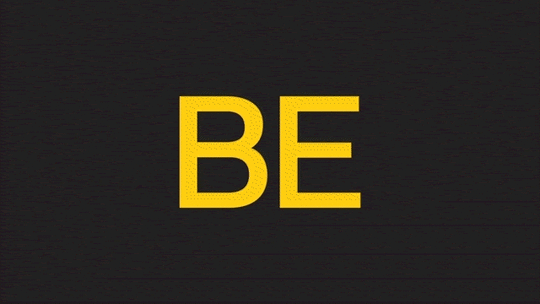 Be all you can be
Be all you can beIn March, the U.S. Army introduced a new brand that redefined what it means to “Be All You Can Be” for a new generation. The award-winning brand transformation was featured in Dezeen, the world’s most popular and influential design magazine.
 Most-read case study
Most-read case studyWhen Quidel Corporation and Ortho Clinical Diagnostics merged, the new global brand had to unify two distinct product portfolios. Learn how we created a new brand that reflects the combined offerings and stands out from the competition.
[image error]Most-read blogHow did we help build a bold new brand after the iconic entertainment merger between Discovery and WarnerMedia? The Warner Bros. Discovery (WBD) brand is a result of the true partnership between the WBD and Siegel+Gale teams to arrive at the final brand strategy, visual identity and campaign for the corporate brand, as well as defining the brand strategy for their new streaming service Max.
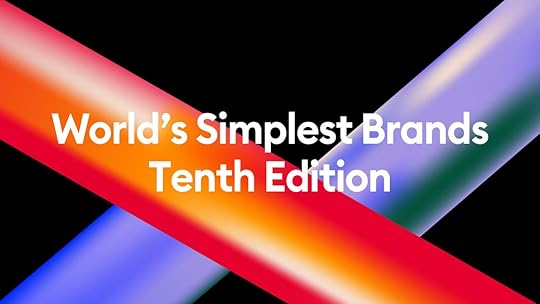 Simplicity pays
Simplicity pays“The world has never been more complex, and for consumers, the number of brand interactions has skyrocketed.”
Delivering simple experiences has never been more important—and 15,000+ consumers across nine countries agree. Our hallmark report confirms that simplicity inspires deeper trust, strengthens loyalty and increases willingness to spend. Above all, simplicity pays. So, which brands and industries succeed at simplicity? Explore World’s Simplest Brands Tenth Edition.
 Cannes-do
Cannes-doIn partnership with Microsoft, our global creative team harnessed the AI power of Bing Image Creator to imagine a series of fantastical sea creatures. Featured in the Microsoft Beach House at Cannes Lions 70 this summer, our designers’ submissions immersed audiences in a vibrant, underwater world—and underscored AI’s ability to amplify our creativity and human ingenuity.
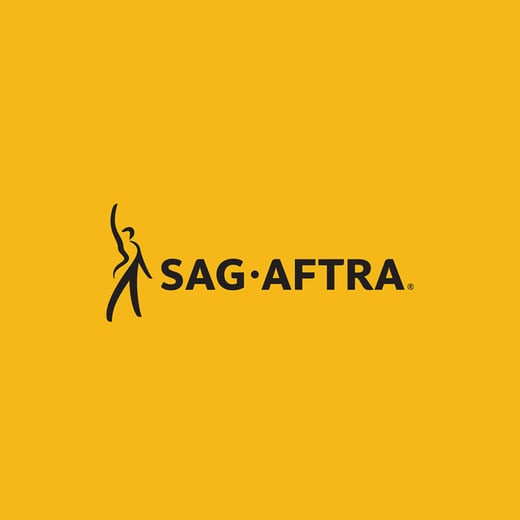 In the news
In the newsWhen we originally developed the SAG-AFTRA brand, it was to unify two very different groups—SAG was the Screen Actors Guild and AFTRA was the American Federation of Television and Radio Artists. But in 2023, the original symbol of uniting two labor unions took on a powerful new meaning for its members. The logo became a rallying cry through lengthy negotiations and seismic shifts in the entertainment industry.
 Is your brand ready for IPO success?
Is your brand ready for IPO success?Many IPOs the world has been waiting on—like SpaceX, Stripe and Databricks— are poised to start trading in the New Year. It’s great news for hungry global investors, but the growing options and expectations have turned up the pressure on marketers. Here’s a simple checklist to ensure your brand is fit to fight on the big day.
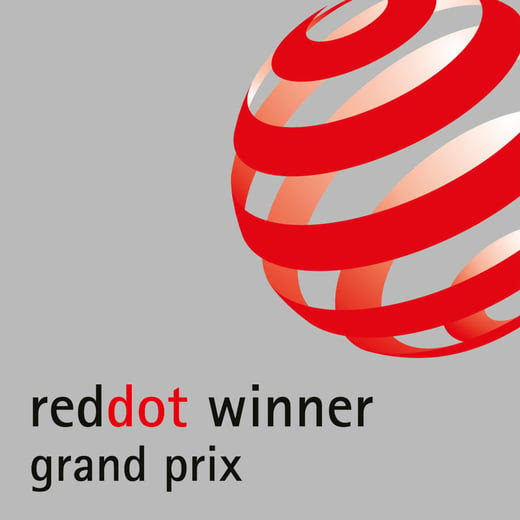 And the award goes to…
And the award goes to…We’re thrilled to share the incredible accolades and awards that have honored our colleagues’ and clients’ imaginative, bold and brand-led work throughout 2023. Congrats to all involved!
 Say what?
Say what?The Siegel+Gale Says podcast gathers insights from across the global Siegel+Gale network on the issues and trends shaping the branding landscape. This year, our experts examined the ‘blanding’ trend, brand-led change, World’s Simplest Brands and went behind-the-scenes of our work for brands like Nielsen, HPE and SADA.
The post Simply Smarter: A brand experience newsletter (December 2023) appeared first on Siegel+Gale.
December 19, 2023
And the award goes to: a recap of Siegel+Gale’s honors in 2023
We’re thrilled to share the incredible accolades and awards that have honored our colleagues’ and clients’ imaginative, bold and brand-led work throughout 2023. Dive into the highlights that have made this year an unforgettable one. Congratulations to all involved!
Best of the Best – Brand Design – U.S. ArmyGrand Prix – U.S. ArmyBrand Design – GlanbiaBronze – Brand Strategy – TirlánTransform North America Awards
GOLDBest Visual Identity from the Public Sector – U.S. Army SILVERBest Brand Architecture Solution – UL BRONZEBest Visual Identity from the Energy and Utilities Sector – Exelon HIGHLY COMMENDEDBest Naming Strategy – LivianBest Rebrand of a Digital Property – JacobsBest Brand Development Project to Reflect a Change of Mission, Values or Positioning – BorgWarnerGOLDFood/Other – GlanbiaEnergy – ExelonUX, Interface & Navigation – JacobsReal Estate – Livian SILVERWeb Design – UX/UI – JacobsAward of Distinction in Website Features — User Interface – JacobsAward of Distinction in Corporate Identity – General/Logo – LivianBrand Design Award – GlanbiaGDUSA Health+Wellness Design Awards
Winner – Branding + Identity + Logos – GlanbiaGOLDBest brand strategy (rename) – FanshuBest visual identity from the professional services sector – Ping AnBest visual identity from the retail sector – XPPenBest visual identity from the technology, media and telecommunications sector – MEIZU SILVERBest visual identity from the lifestyle and wellbeing sector – LeaderBest visual identity from the retail sector – NVC BRONZEBest visual identity from the professional services sector – YeahkaBronze – Best brand architecture solution – XIAMEN ITG GROUPBronze – Best brand evolution (business) – Yeahka HIGHLY COMMENDEDBest brand evolution (business) – MEIZUBest brand development project to reflect a change of mission, values or positioning – XPPenThe post And the award goes to: a recap of Siegel+Gale’s honors in 2023 appeared first on Siegel+Gale.
December 18, 2023
The heat is turning up! Is your brand ready? A checklist for preparing your brand for IPO success
“If you can’t stand the heat, get out of the kitchen.” U.S. President Harry Truman famously said it to his war contracts team. CEO’s prepping for an IPO deploy it with their marketers.
While 2023 was not a hot year for IPOs, market momentum is building, with Q3 having witnessed a notable improvement in post-IPO share price performance compared with previous quarters. According to a recent EY IPO report, the global IPO market has seen shifting dynamics, including improved investor sentiment in the major Western economies and the prospect of high-profile US mega-IPOs in 2024.
The heat is turning up, and the kitchen is getting crowded – once again.
Many IPOs the world has been waiting on—potential mega-IPOs like SpaceX, Stripe and Databricks—are poised to start trading in the New Year. It’s great news for hungry global investors who are more cash rich than ever, but the growing options and expectations have turned up the pressure on marketers.
How can we stand out? Do people understand our value? How do we keep momentum after day one? Every executive, journalist, potential investor and employee turned-future-millionaire are breathing down their necks.
IPO preparation is typically focused on financials; corporate governance, listing protocols, and publishing sensitive data keep people up at night. But those who truly win see beyond. Successful IPOs prepare their brands with the same care and attention as their balance sheets.
Here’s a simple checklist to ensure your brand is fit to fight on the big day. Because the heat is coming whether you’re ready or not.
1. A descriptor that’s engaging, clear and repeatable
Nightmare reporting reads “The latest unicorn, Another fintech or They do health stuff.” Brands can combat misrepresentation by projecting a simple descriptor that journalists, investors, employees and onlookers can use over and over. GlobalFoundries, a semiconductor foundry and the largest tech IPO of 2022, marked a significant financial achievement by surpassing their initial raise target of $2.6B. We partnered to develop the brand pre-IPO and since going public, the company has experienced a consistent upward trajectory. Explaining their intricate industry to a broader audience has been a challenge, but CEO Thomas Caulfield emphasized the transformative nature of the company. Caulfield remarked, “Our business has evolved, and we needed a clear, resonant message.” They embraced a concise descriptor, positioning themselves as leaders in “Delivering a new era of more.” While not universally familiar, this branding resonates strongly within the semiconductor industry, offering a clear signal to potential investors and industry insiders alike.
2. An achievable, purpose-driven story
Profits come from brands that reach people in a meaningful way. The mission doesn’t have to be lofty, but it does have to be relevant, authentic and clear on how the brand achieves it. Xpeng, the Chinese electric car brand, is one of several start-ups dubbed “Tesla fighters.” Xpeng separates from the crowd through a bold purpose, to “drive Smart EV transformation with technology and data, and shape the mobility experience of the future.” It’s both noble and realistic. They use ownable language like “Smart EV with Internet DNA” to build the confidence they will achieve their aim—shaping the future while delivering profits now. It’s partly why they shattered expectations, raising $1.5B when they started trading on the NYSE in 2020.
3. An unforgettable identity
The ‘how’ of your brand can be as powerful as the ‘what’ and ‘why’. The language a brand uses, the visuals it evokes and even a clever brand name can build intrigue and excitement to rise above. Klarna is a name that sounds straight out of a medical dictionary or IKEA catalogue. The Swedish payments superstar has already brought together an uncanny money pot that includes Sequoia Capital, H&M and Snoop Dogg. Their tone of voice and visual identity are just as weird. A mix of direct language “Pay Later with Klarna” with the quirky “Slice up your payment with Klarna” pitches a broad tent. With a bright, bold pink color and imagery of the stylish youth that use it, the brand attracts with swagger in the same way it will reach global investors. It’s no wonder people are salivating over the IPO, which is slated for 2024.
4. A solid framework to scale
IPOs are preceded and succeeded by rapid growth in revenues, geographies and headcount. The foundational aspects of a brand are vital, but they’re nothing without a foundational brand, proper management, and engagement. In the early 2000s, Tata’s group of companies united under an iconic brand, becoming a symbol of Indian industry (a brand we helped develop). Playing in technology, industrials and more, the consistency of Tata Group’s brand worked across varying value propositions. When Tata Technologies became the second group company to IPO in November 2023, it was the largest of the year, and introduced itself as a mature brand with an $18B market cap in Day 1.
When a company begins the IPO conversation, chances are brand is not at the top of the list, if it’s even on the list. It can be a challenging conversation to update a long-held brand or refine a founder’s napkin-scratched baby. But through simple steps and the right preparations, marketers can handle any kitchen they face when preparing their brand for IPO success.
So, go ahead market, turn up the heat and let’s get cooking!
The post The heat is turning up! Is your brand ready? A checklist for preparing your brand for IPO success appeared first on Siegel+Gale.
December 12, 2023
Rigetti’s newest evolution: The Novera QPU, the premiere “personal” quantum computer
In SMPL Q+A, we interview our practitioners on all things relevant to branding, design and simplicity. Here, we speak with our experts about our work with Rigetti, a full-stack quantum computing company, and their first commercially available quantum processing unit (QPU), the Novera QPU. Read the official announcement from Rigetti here.
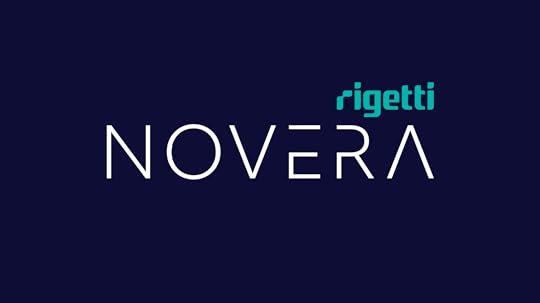
Can you describe Rigetti’s history with Siegel+Gale?
Sean Carney, Director, Experience Production: Siegel+Gale created the Rigetti brand visual identity in 2019—and a website to match. An interoffice, cross-practice Siegel+Gale team worked hand-in-hand with Rigetti to rapidly iterate their brand identity. The website was launched in only three weeks (as an MVP with core pages only) and upgraded several weeks later in a fast-follow sprint.
Why did Rigetti re-engage Siegel+Gale?
Sean Carney: In 2023, Rigetti prepared for their next evolution: marketing their first physical product—which Siegel+Gale named “the Novera QPU”—the premiere “personal” quantum computer that any lab or institution can own and experiment with.
Naturally, Rigetti turned to Siegel+Gale as the all-important launch was only months away, and the company needed experience in bringing a physical product to market.
StrategyCan you explain the development of the Novera QPU product strategy?
Miranda Wolf, Associate Strategy Director: To develop the Novera QPU brand, we worked collaboratively with the Rigetti team to quickly get up to speed on Rigetti’s business goals, cutting-edge technology and how Novera QPU is impacting the quantum computing landscape. It was critical to ensure that the new brand could live independently but also clearly tie back to the Rigetti primary brand. We also really wanted to get into the mindset of the target audience and understand what the Novera QPU will help them accomplish and how ownership would make them feel.
How does it fit into the Rigetti brand?
Miranda Wolf: Rigetti’s mission is to “build the world’s most powerful computers to help solve humanity’s most important problems.” It was crucial that the Novera QPU brand help to further this mission. Communicating that the Novera QPU uses the same technology as Rigetti’s most powerful QPUs is a huge part of the overall Novera QPU value proposition.
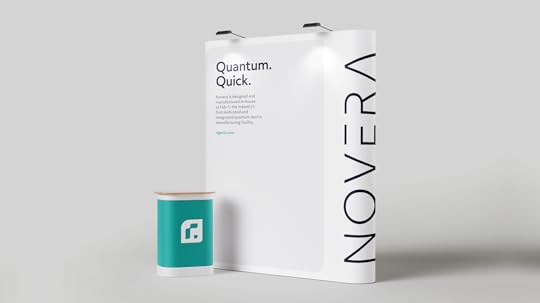 Brand Communication
Brand Communication Can you talk about the Novera QPU’s messaging and positioning?
Miranda Wolf: With the positioning and messaging, we wanted to convey the excitement and research potential that the Novera QPU makes possible. A big piece of this is how, with a Novera QPU, you are becoming part of a community of experts working to define not only the quantum computing industry but how quantum computing can be used. The Novera QPU allows researchers to have hands-on access to previously unavailable hardware so that they can explore, tinker, educate and push their research forward.
NamingCan you tell us about the meaning behind the Novera QPU name?
Aaron Hall, Group Director, Naming: Novera comes from the Italian word for “nine” and “era” but also cues the idea of “nova” or new. In other words, Novera starts the story about an explosion of innovation into a new era of quantum computing, beginning with a 9-qubit QPU.
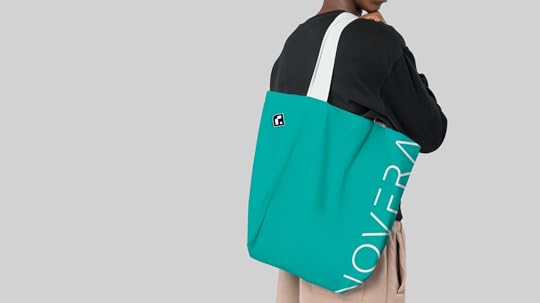
How was the Novera QPU logo developed?
Mei Wing Chan, Associate Creative Director: As a product identity, we knew the logo we created for the Novera QPU would be a unique wordmark that could be paired with the Rigetti brand logo easily to form a simple brand architecture. The selected logo uses its primary typeface as a foundation, and we were fortunate with the Novera QPU name as the letterforms made it effortless to tell a distinct story through typography alone. The V and A form arrows signaling the down and upward measurements of qubits ending on a trajectory of progression and discovery while also creating symmetry. Through the cuts in the E and R, we wanted to convey the idea that Novera QPU can fill in the gaps of existing knowledge and provide solutions for the lofty questions that Rigetti customers want to solve.
What inspired the design for the Novera product page? How were the Rigetti design guidelines expanded to include Novera?
Mei Wing Chan: Leaning into the brand identity and visual system we created for Rigetti in 2019, we designed the product page using existing grid templates and content modules. As a way of creating distinction, we introduced a holding shape that was inspired by the Rigetti icon. This shape becomes a background for product photography and a container for content, messaging and form fields. While the Novera QPU’s product shots play a heroic role in the layout, technical specifications are also prominently featured so customers can dive deep into Novera’s immense capabilities. The product page was created to fit into the Rigetti digital experience while establishing a little moment of its own.
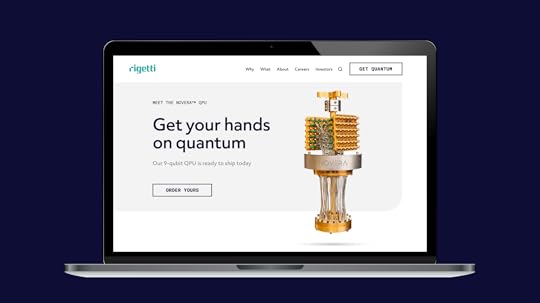
How was the Novera QPU’s debut brought to life on Rigetti.com? How did this support the product launch?
Sean Carney: It was important that all of the Novera QPU’s publicity—earned and owned—had a destination to point to. Customers needed a place to learn about the Novera QPU and order their own. Thus, a deluxe product landing page was created by Siegel+Gale, in conjunction with the Rigetti team and their digital developers, to showcase capabilities and specifications for a system with the low (for quantum) price of $900,000.00. And, yes, there’s what is, in effect, a “buy now” button in case any readers are interested in ordering!
How did brand and the product strategy inform the Novera QPU’s UX—as expressed on the product page and the Rigetti.com home page?
David Reis, Senior Strategist, Experience: This project was an exercise in establishing an effective information hierarchy. The Novera QPU product is advertised on the home page, just below a commitment to innovation, which serves as evidence that the brand is following through.
The product page invites potential customers to shape the future with the power of accessible quantum technology. We front-loaded the page with value propositions and product specs to build understanding, followed by use cases, operating requirements, and price to validate its feasibility. Like the product, this page is designed to help customers get their hands on quantum.
We knew we needed a world-class team to support the strategy and design of introducing the Novera QPU to the world. Siegel+Gale exceeded our expectations and assembled a top-notch team of experts to work on naming, messaging, experience, and positioning. Siegel+Gale seamlessly became an extension of our team. The Novera QPU launch is an expression of Rigetti’s pioneering capabilities—and a testament to Siegel+Gale’s abilities to deeply understand and deliver on our go-to-market needs.
—Rebecca Malamud, Senior Marketing & Comms Manager, Rigetti
The post Rigetti’s newest evolution: The Novera QPU, the premiere “personal” quantum computer appeared first on Siegel+Gale.
Alan M. Siegel's Blog
- Alan M. Siegel's profile
- 4 followers



